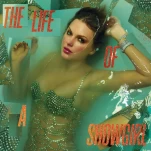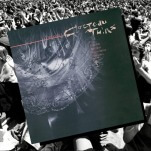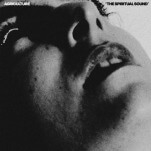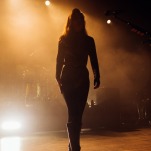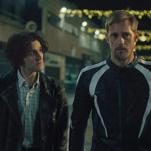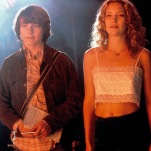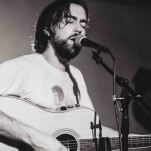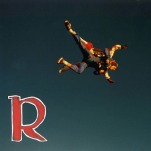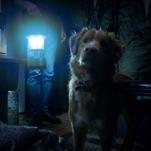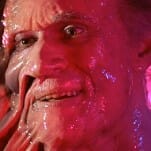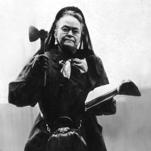Why You Should Be Watching Bosch, Amazon’s Under-the-Radar Noir
Photo: Amazon Prime Video
Often, when I sit down to write about a TV show, I will put an episode on in the background to help focus my subconscious on the Big Mood. Yes, television is a visual medium, but the sound mixing, the music a series chooses to include both diegetically and nondiegetically, the vocal register and dialogue speed of the characters from scene to scene—all of it has significance. The constant hum of Adam Lastiwka’s compositions underscoring every moment of Travelers is as integral to that show as the aspirationally zingy rat-a-tat of Amy Sherman-Palladino’s dialogue is to all of hers, as the sonically flat stage punctuated by audience laughter is to multicams like One Day at a Time and Raven’s Home. A slow crescendo of low strings means something. A cheerful bop or sultry standard accompanying a character as they move from one room to another mean something. Listening, for a television critic, is just as important as watching.
Amazon’s stark, contemporary procedural, Bosch, which returns this week for its fourth season, makes this writing trick impossible. With two notable exceptions, the entire series is completely devoid of background music, cues, or stings. Harry Bosch and his colleagues, all civil servants buried in a hard, dangerous, thankless job that will chew up and spit out anyone it doesn’t corrupt, are silent as often as they speak, never using more words than whatever few are realistically needed to move an interaction forward. The only extra sound in any scene, beyond that minimally scripted dialogue, is whatever ambient noise the real L.A. locations have to offer.
The two notable exceptions? The very rare scenes in which a pivotal act of violence occurs, and the trippy, intensely atmospheric reality-doubling title sequence designed by Imaginary Forces and featuring Caught A Ghost’s evocatively haunting track, “Can’t Let Go,” which is updated each season to quite literally reflect the central, symbolic images of the newest major arc (this season—the murderously crooked Beaux-Arts funicular, Angels Flight):
Between this moody opening—the clip above is from Season One—and the attention-demanding silence that presides over the bulk of the series, it’s clear that on Bosch, whatever critical significance there is to be found is entirely visual. And from the dramatically framed, disorientingly angled, chiaroscuro shots that punctuate Bosch’s grind through L.A.’s corrupt streets, those visuals belong less to the network procedural tradition than they do to film noir.
Before I pull out the receipts, though, some background for those of you who haven’t gotten around to this sleeper hit from the variably proficient stable of Amazon Originals: Adapted non-chronologically from Michael Connelly’s Hieronymus Bosch mystery series, Bosch stars a solid, stoic Titus Welliver in the title role as an LAPD detective who is committed to justice, and takes no bullshit on the hunt for it—neither from civilians, nor from fellow members inside the justice system. Each season spreads one complex case across ten episodes (already more like Broadchurch and The Killing than like a network procedural), and follows not only Bosch and his partner, Jerry Edgar (a perfectly cast Jamie Hector) through their primary investigation, but also the personal and professional lives of Bosch’s bosses (Amy Aquino and Lance Reddick) and family (Sarah Clarke, Madison Lintz, Hoon Lee)—and, since Season Three, of his intradepartmental frenemies at his own precinct and in Internal Affairs (Paul Calderon, DaJuan Johnson, Winter Ave Zoli).
Following the 2014 zeitgeist, Bosch’s first season focused on a depraved serial killer fixated on his and Bosch’s shared childhood traumas; the second, moving Bosch back into the political hinkiness within the L.A. justice system, turned its gimlet eye on the hubris of the rich, as framed by Jeri Ryan as a conniving, honest-to-god femme fatale. The third season, following up in the most direct way yet on the cold case murder of Bosch’s prostitute mother, centered on the shadowy, gray morality that might overcome seasoned officers like Bosch who see exactly what justice needs to be served, but isn’t, and how that morality might be weaponized by malevolent forces. The fourth season, premiering this week, brings that moral grayness out of the shadows, vaulting a notoriously prickly Bosch again into the public eye, only this time to lead the real-world relevant investigation of the murder of an infamously anti-police civil rights attorney on the eve of his big police brutality and entrapment case against the LAPD’s entire—and possibly entirely corrupt—Robbery-Homicide Division.
All very different story arcs. All connected by the stark, carefully framed, disorienting depressed urban visuals central to the noir tradition. Wide, low angles every time we approach Harry’s glass-walled house overlooking the city. Skewed Dutch angle shots every time a character is in danger. Obscured or distorted reflections through camera screens, through nighttime windows glittering from a distance, from the spy camera Harry illegally sets up across from the apartment building of the man involved in his mother’s murder, from the slice of gun-hand caught in the Angels Flight security cam in the Season Four murder.
When it’s not using those visual noir elements directly, Bosch is putting a modern spin on them. Where a classic noir wide angle would be low, Bosch goes high—Bosch looking down at the city from within the glass-walled confines of his hilltop house; Chief Irving (Lance Reddick) looking down at the city from his perch atop Police Plaza; the RHD detectives suspected of the civil rights attorney’s murder standing above the L.A. River. Where a mirror or a frosted window pane would distort a face in classic film noir, Bosch uses a cell phone camera or the side mirror of a police cruiser or the fuzzy image of a bad-reception Skype call.
The plots, too, are distorted in their framing: While each season does have one central case as a general framework, that’s by no means the only long-term story in play. As in life, various cases overlap, and various agendas pass in the night, all in shaggy, obtuse ways with zero regard for television convention of pace or timing, only the characters’ actions and reactions in mind.
Connelly has said about the show, “Our overriding goal is not to show how a detective works on a case, but how a case works on a detective,” and while that sentiment might seem hokey, the subtle starkness with which Bosch metes out its stories—reflected in the quiet, asymmetrically shot visuals inherent to the noir traditions the show is following—the gradual erosions that difficult, often corrupting police work can enact on a human psyche are made not just believable, but palpable. This newest season, with its noir-informed focus turned on the thorniest tensions between the (in)humanity of law enforcement and the humanity of the law’s highest ideals—especially as they are played out through the lens of racial discrimination and police violence in 2018 America—will, through all its visual distortions, make that distinction more palpable still.
Whether Bosch or justice itself make it out in one piece? You’ll just have to watch to find out.
Season Four of Bosch premieres Friday, April 13 on Amazon Prime Video. For non-subscribers, the pilot episode can be streamed on YouTube here.
Alexis Gunderson is a TV critic whose writing has appeared on Forever Young Adult, Screener, and Birth.Movies.Death. She’ll go ten rounds fighting for teens and intelligently executed genre fare to be taken seriously by pop culture. She can be found @AlexisKG.
